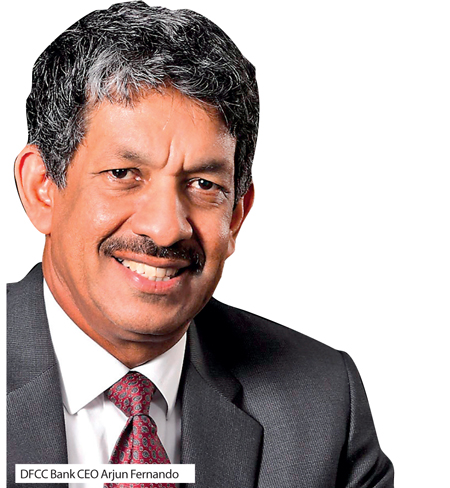18 May 2016 - {{hitsCtrl.values.hits}}
The DFCC Bank PLC group increased its March quarter net profits 15.8 percent to Rs.955 million with an earnings per share of Rs.3.60 from a year ago, the interim results showed.
The performance was supported by moderate growth in core banking and lower costs but the higher provisions for possible bad loans, lower fee-based incomes and trading losses had a bearing on the results. 
The net interest income of the group grew 7.2 percent year-on-year (YoY) to Rs.1.79 billion for the quarter while the net fee and commission income fell 4.3 percent YoY to Rs.305.1 million.
This is on the back of a 2.1 percent or Rs. 3.5 billion growth in gross loans and advances of the bank on a standalone basis. Out of this Rs.3 billion came from overdrafts.
The bank’s margins were not publicly available.
The assets of the bank stood at Rs.255.1 billion, up 3.6 percent during the three months.
The deposits grew 5.9 percent or Rs.6.6 billion to Rs.117.5 billion. The low-cost deposits – current and savings accounts (CASA) – ratio was 17.3 percent.
The impairments rose as much as 62.5 percent YoY to Rs.455 million due to provisions made for individual customers.
“The cumulative allowance for impairment for loans and advances was maintained at a healthy level of 72 percent as a percentage of impaired loans and advances on March 31, 2016. The ratio of impaired loans to total loans on March 31, 2016 was 5.6 percent compared to 5.1 percent on December 31, 2015,” the bank said in an earnings release.
Meanwhile, the bank’s trading portfolio made a net loss of Rs.19.5 million from Rs.12.9 million net gain made a year ago due to the rise in yields of the government securities.
The net losses of the bank’s available-for-sale (AFS) investment portfolio, which also composed of gilt-edge securities, mostly made a staggering Rs.2.8 billion mark-to-market loss against a Rs.672.1 million loss a year ago. These losses are adjusted against equity.
However, the bank’s AFS portfolio losses were excluded in the calculation of capital adequacy and thus the group’s Tier I and Tier II capital adequacy ratios stood at 15.13 percent and 15.07 percent, respectively, the bank said.
The net gains from financial investments – mainly consisting of dividend income from the investment in Commercial Bank of Ceylon PLC – remained largely unchanged at Rs.623.7 million.
The other operating losses narrowed to Rs.127.9 million from Rs.287.2 million loss due to contraction of foreign exchange losses.
Meanwhile, the total overheads of the banking group narrowed 13.3 percent YoY to Rs.1.1 billion amid lower personnel expenses against the same quarter last year.
“This decrease was mainly due to the reduction in personnel expenses, as a result of the annual performance-based staff payments being included in the comparable period,” the bank said.
As of March 31, 2016, Bank of Ceylon had a 14.35 percent stake in the bank followed by Hatton National Bank PLC with 12.22 percent. The state-controlled private sector pension fund, the Employees’ Provident Fund had a 9.19 percent stake, being the fourth largest shareholder of the group.
27 Nov 2024 16 minute ago
27 Nov 2024 1 hours ago
27 Nov 2024 1 hours ago
27 Nov 2024 2 hours ago
27 Nov 2024 2 hours ago